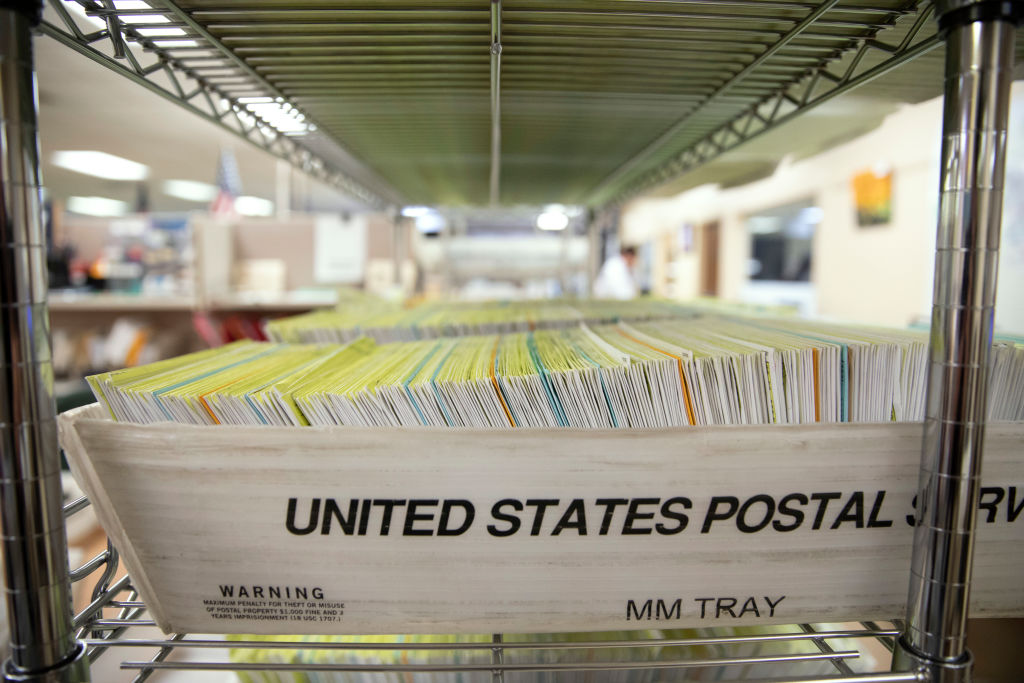Republicans are afraid of voting by mail in November. So is President Trump — which could cost him the 2020 election.
The days are ticking by on our way to the general election and our fight with COVID-19 continues to rage. It’s more and more likely that November will see more voting by mail than in any previous election. It’s not a matter of whether Trump wants it or ‘allows’ it: he really doesn’t have much say.
Voting by mail has been here for years. All 50 states already have some form of vote-by-mail. Regulations vary, with some states permitting 100 percent vote-by-mail and others demanding proof that you’d be unable to vote in person. Most are somewhere in the middle: you only need to request your ballot be mailed to you and give some vague reason.
The current Republican dread of vote-by-mail is curious. Republican candidates have long enjoyed an advantage when it comes to voting by mail. Generally, Republican voters tend to love absentee voting too. Older voters understand the absentee process and are more likely request their ballots ahead of time. Millennials and Gen-Z voters would be hard-pressed to find a stamp, let alone take the time to drop an envelope into a mailbox.
That was before COVID-19. The GOP’s base is much more vulnerable to the virus than the general population is. A second flare-up sometime in the fall would threaten the turnout of the Republicans’ most valuable supporters. This is where the infrastructure the Republicans have spent recent years building could put them at a distinct technical and organizational advantage.
Imagine for a moment a world where every registered voter is mailed a ballot and there are no or few in-person polling locations. The ballots would probably reach voters in at least the first week of October, giving people approximately four to five weeks to get their ballots in the mail. A campaign could assume with confidence that its targeted voters will have a ballot sitting on their kitchen counter, just waiting to be filled out.
Elections, as we’re continually reminded, are about turnout. In normal times, campaigns check to see who’s requested absentee ballots and continually chase voters with direct mail, email and text messages. On election day, volunteers are sent to polling locations to check the rolls to see who’s voted and report back to campaign headquarters with who still needs to be turned out.
If the November election ends up being nearly 100 percent conducted by mail, which campaign do you think has the advantage? We might think that conducting an election entirely by mail would be rather old-fashioned, but it would actually turn the election into a nearly 100 percent digital operation, the likes of which we haven’t seen yet.
Republicans have spent the last three-and-a-half years building and fine-tuning a digital and grassroots turnout operation. They have invested millions of dollars into data, email, social advertising, text messaging and other tools. These could easily be adapted into a fine-tuned mail-in machine, especially given the five weeks they’d be given to turn their voters. This would put the GOP at a distinct advantage: it would probably be able to predict with near certainty how many votes its candidates could expect, before the states even report them.
The question is, can the Democrats and Joe Biden catch up in time? Even now, Biden’s campaign is still deciding how to build out his digital team, which currently only stands at around 25 people. Meanwhile, Biden, with the youthful vigor and tech savvy we have come to expect from him, is focused on producing a podcast from his basement that has been eviscerated by the likes of New York magazine and the New Republic.
***
Get three months’ free access to The Spectator USA website —
then just $3.99/month. Subscribe here
***
While Democrats seem to understand the importance of voting by mail this fall, none of their actions appear to recognize the crucial importance of the digital and technical infrastructure needed to build a serious outreach and turnout machine. This is the deficiency which doomed the Clinton campaign in 2016. The aristocrats of liberalism have learnt nothing and forgotten everything. The Trump campaign, on the other hand, has constructed a digital juggernaut.
There’s a lot of time before November. Six months out, Biden’s dithering campaign looks like it’s rearranging deck chairs on the Titanic. Meanwhile the Trump campaign’s fear of vote-by-mail could come to resemble a terror at imaginary monsters under the bed.


















